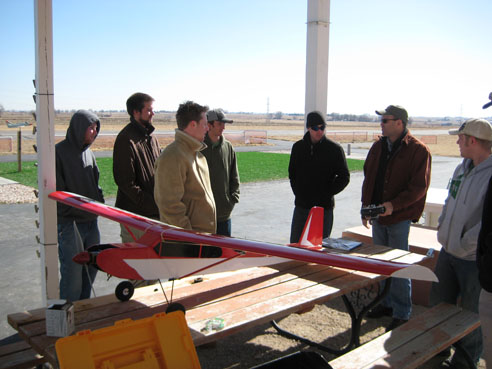Difference between revisions of "User:CSU-FCUAV"
| Line 9: | Line 9: | ||
The increasing interest in practical fuel cell powered UAVs motivated research into design methods for fuel cell powered aircraft. The purposes of the design studies are 1) to characterize the design tradeoffs and optimal configurations of aviation-specific fuel cell powerplants, 2) to compare the performance of fuel cell aircraft to conventional aircraft, and 3) to function as a preliminary design tool in a development process for a fuel cell UAV. | The increasing interest in practical fuel cell powered UAVs motivated research into design methods for fuel cell powered aircraft. The purposes of the design studies are 1) to characterize the design tradeoffs and optimal configurations of aviation-specific fuel cell powerplants, 2) to compare the performance of fuel cell aircraft to conventional aircraft, and 3) to function as a preliminary design tool in a development process for a fuel cell UAV. | ||
[[Image:Example.jpg]] | |||
== CSU-FCUAV Team Blog == | == CSU-FCUAV Team Blog == | ||
Revision as of 11:32, 1 April 2009
CSU - Long Endurance Flight Team
The long endurance unmanned aerial vehicle (UAV) has significant value as a low-cost, autonomous reconnaissance and remote sensing platform for research, commercial and military missions. Fuel cell powerplants are of interest in this application because of the potential to construct powerplants of high specific energy, low noise, low thermal signature, and improved environmental compatibility.
Because of these performance advantages, fuel cells have recently found their first aviation applications as powerplants for small-scale long-endurance and long-range UAVs.
The increasing interest in practical fuel cell powered UAVs motivated research into design methods for fuel cell powered aircraft. The purposes of the design studies are 1) to characterize the design tradeoffs and optimal configurations of aviation-specific fuel cell powerplants, 2) to compare the performance of fuel cell aircraft to conventional aircraft, and 3) to function as a preliminary design tool in a development process for a fuel cell UAV.
CSU-FCUAV Team Blog
April 1, 2009:
The design process has been started on the modified Blue Airlines Explorer. Currently, CAD modeling is being done on the major components of the build so we can do a systems layout of the fuel cell power plant components and start working on a fuselage to hold everything. The second Paparazzi autopilot was received and an airframe file has been started for the new plane.
Read more: CSUBlog
Hobby Lobby Senior Telemaster ARF Autopilot/Sensor Mule
Specs:
Airframe: Hobby Lobyy Senior Telemaster ARF
RX: Modified Futaba R617FS
Autopilot: Tiny 2.11 LEA-5H from PPZUAV
Link: XBee Pro 2.4 GHz
IR: PPZUAV IRV and IRH Sensors
Extras: AttoPilot Current Sensor (IP)
Associated Files:
Airframe:
Media:
Blue Airlines Explorer
Status: Design Stage
Airframe: Blue Airlines Explorer
RX: Futaba R617FS, Futaba R6014FS to PPZUAV PPM Encoder
Autopilot: Tiny 2.11 LEA-5H from PPZUAV
Link: XBee Pro 2.4 GHz
IR: FMA IRV and IRH Sensors
Contact Information
Dr. Thomas H. Bradley
Mechanical Engineering
Colorado State University


